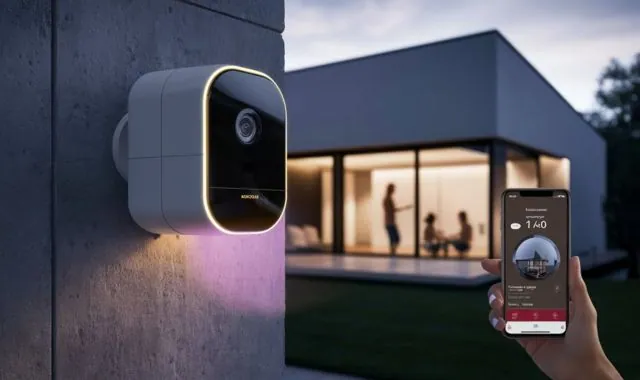Physical Address
304 North Cardinal St.
Dorchester Center, MA 02124

Unveiling the magic of Infrared Sensor Technology! These hidden helpers use heat to sense motion, temperature, and more, making our lives easier (automatic doors!) and safer (security systems!). Expect exciting advancements like miniaturization for even more invisible tech and AI for smarter applications. Explore the world of infrared sensors!

Ever wonder how your remote control changes channels or your motion-sensor light turns on automatically? The answer lies in the invisible world of infrared sensors. This article will guide you through everything you need to know about these fascinating pieces of technology.
An infrared sensor is a device that detects and responds to infrared radiation, a type of electromagnetic wave invisible to the human eye.
Everything with a temperature above absolute zero emits infrared radiation. Infrared sensors can detect these subtle variations in heat, making them incredibly versatile.
There are two main types of infrared sensors: active and passive.
emit their own infrared radiation and then detect the reflection off objects. This allows them to determine not only presence but also distance.
(PIR sensors) don’t emit any radiation. Instead, they detect the natural infrared radiation emitted by objects in their field of view.
Active infrared sensors are often used for:
Passive infrared sensors are widely used due to their low power consumption and are ideal for:
Infrared sensors have a wide range of applications that enhance our daily lives:
Infrared sensors in home security systems deter potential intruders and provide peace of mind.
Businesses of all sizes can benefit from infrared sensors to protect their property and assets.

The invisible light pulses from your remote control are infrared signals that your TV can detect.
Infrared sensors in thermostats help maintain a comfortable temperature by detecting the room’s infrared radiation.
Infrared thermometers use infrared sensors to measure body temperature quickly and easily.
Night vision goggles utilize infrared sensors to convert faint thermal radiation into a visible image.
Infrared sensors in automatic doors and faucets enhance convenience and hygiene.
Infrared sensors often have low power consumption, making them a sustainable choice.
Unlike visible light sensors, infrared sensors operate invisibly, offering a more subtle security solution.
Infrared sensors work effectively in most weather conditions, rain or shine.
Infrared sensors only detect what’s within their specific field of view, so strategic placement is crucial.
Sudden changes in temperature or pets moving around can trigger false alarms in PIR sensors.
Heat sources like fireplaces or sunlight can affect the accuracy of some infrared sensors.
The world of infrared sensor technology is constantly evolving. We can expect to see:

The future of infrared sensor technology is brimming with exciting possibilities. Here are some potential applications we can look forward to:
Imagine homes that automatically adjust lighting, temperature, and even appliance settings based on occupant presence and activity detected by infrared sensors.
Infrared sensors could be integrated into wearable devices for continuous health monitoring, tracking vital signs like heart rate and body temperature.
Facial recognition combined with infrared sensors could create highly secure access control systems, allowing only authorized individuals to enter specific areas.
Infrared sensors can play a crucial role in self-driving cars by providing a clear picture of the environment in low-light conditions or during fog.
Infrared sensors can be used to monitor environmental changes, such as deforestation or rising sea levels, providing valuable data for conservation efforts.
The world of infrared sensors is a fascinating one, offering a glimpse into the invisible world of heat radiation. From home security to temperature control and even night vision, these versatile devices play a significant role in our daily lives. As the technology advances, we can expect even more exciting applications that will enhance security, improve automation, and revolutionize various industries. So, the next time you use your remote control or walk through an automatic door, remember the silent power of infrared sensors working behind the scenes to make your life a little easier and safe
A: Yes, infrared sensors are generally safe. They detect naturally occurring heat radiation and do not emit any harmful radiation themselves.
A: Absolutely! Infrared sensors function well in most weather conditions, making them suitable for outdoor security systems or automatic features like porch lights.
A: Proper placement is key. Avoid placing sensors near heat sources or vents that can trigger false alarms. Additionally, keep the sensor’s field of view clear for optimal detection.
A: Many manufacturers offer detailed information about their infrared sensor products and their intended uses. Online resources and forums dedicated to DIY security systems or home automation can also provide valuable insights.
A: The future is bright! Expect miniaturization for even more discreet integration, enhanced sensitivity for better accuracy, and exciting integrations with artificial intelligence for smarter and more context-aware applications.